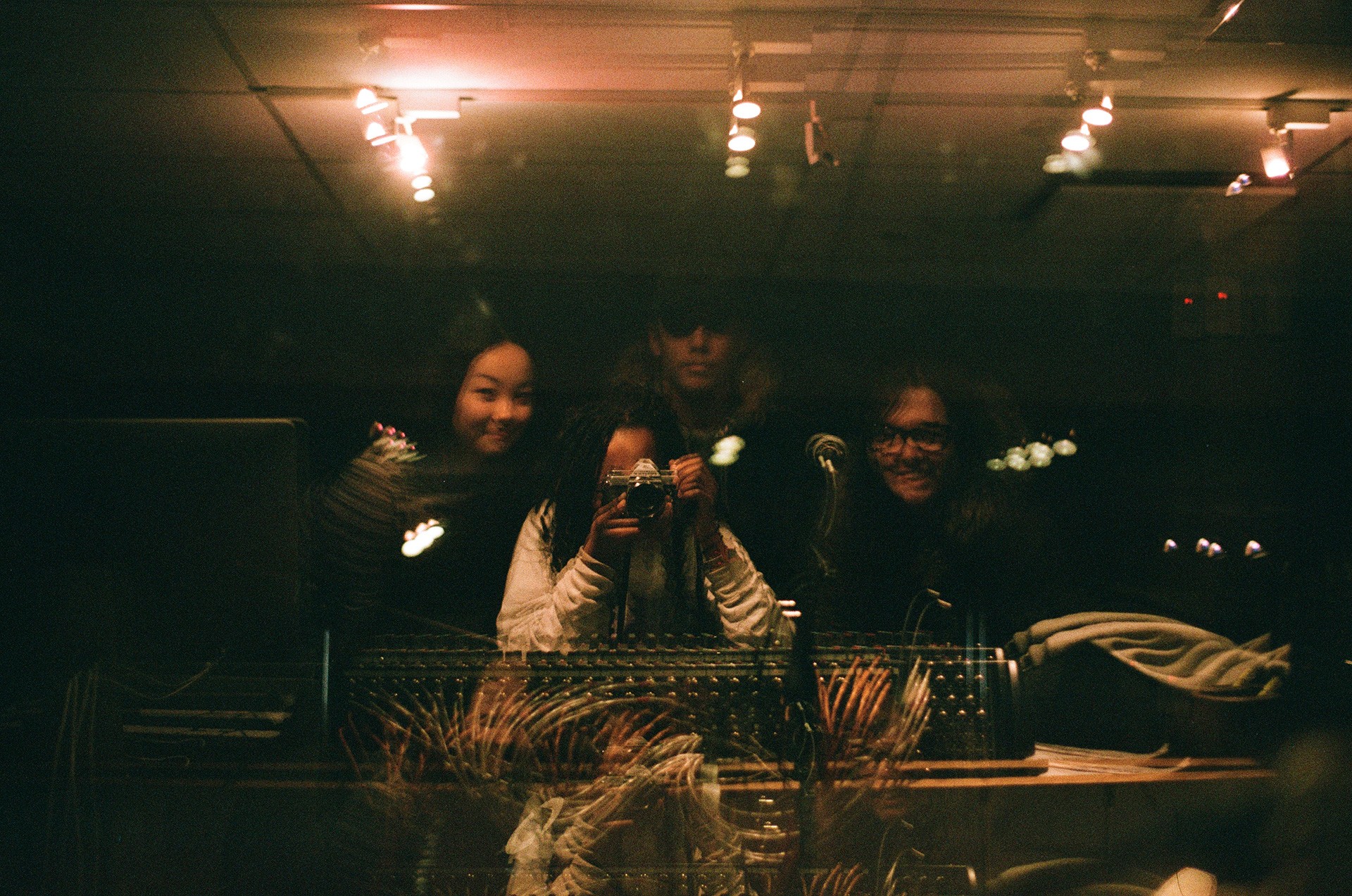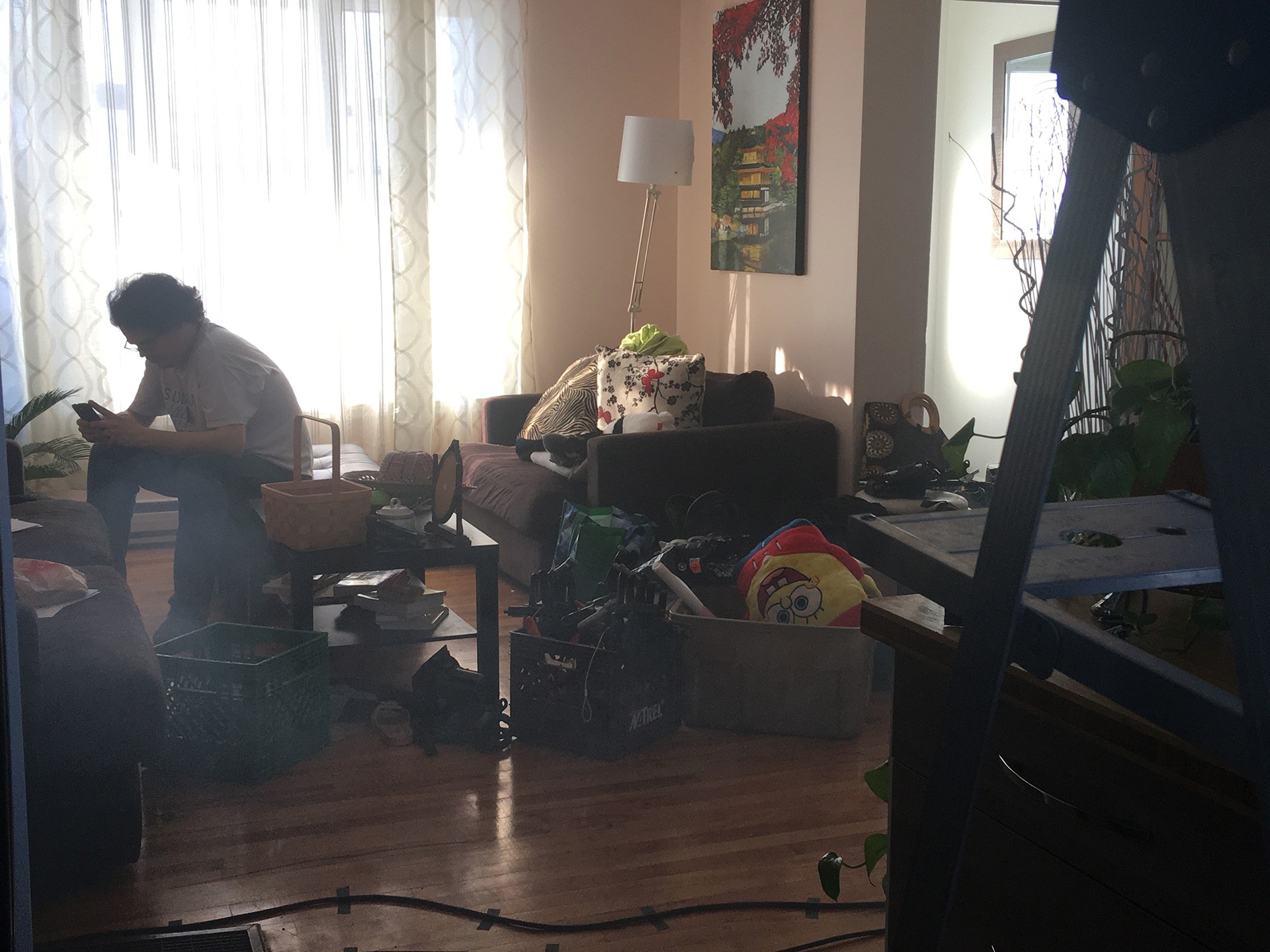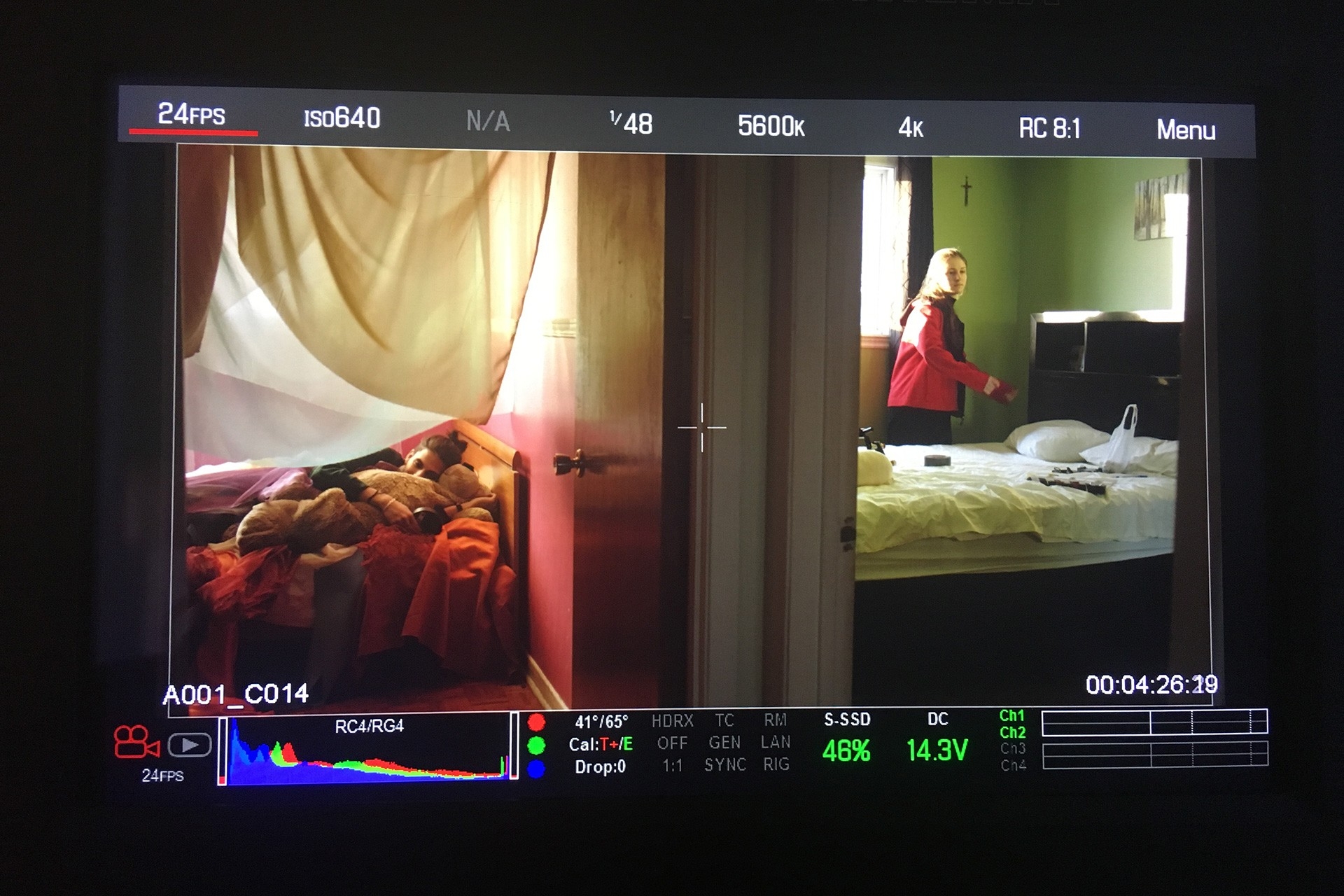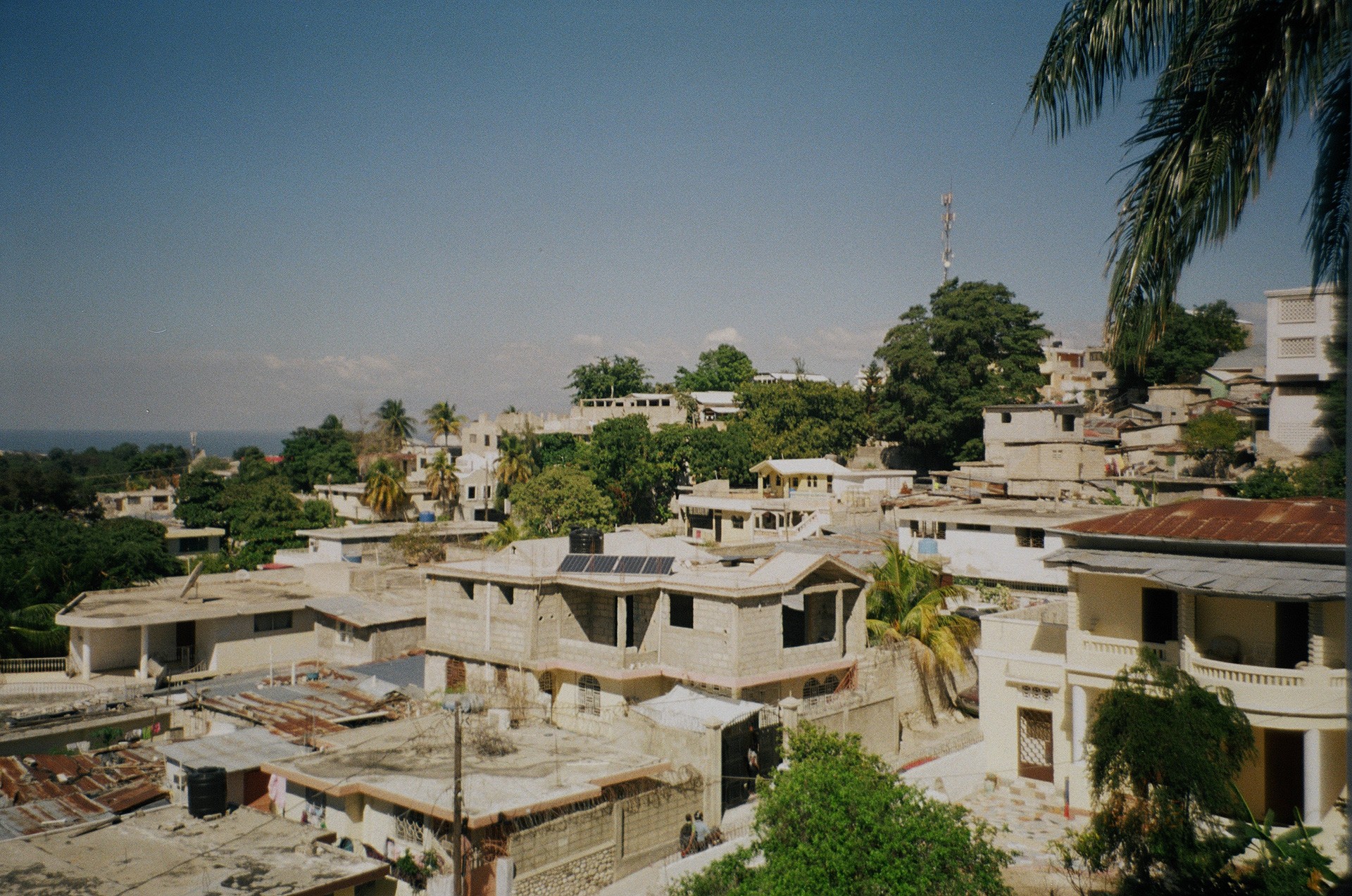
A break from cinema
She is my co-worker, and she was also in one of the Concordia student movies. She was on set and got to see me in that environment. For me, she is the one that gets to see all the aspects of my life, and understands me better than any of my other co-workers. She is one of the people that regularly checks on me and asks me things like: “Hey, how are you doing? But actually, how are you doing?” I do that for her too. We know what’s going on in a deeper way.
An evening with
co-workers
I have a job outside of school. There was an evening I spent with my co-workers. Most don’t really understand what I do at school. I wish I had more time to spend with them because every time we want to hang out after work, to go to someone’s apartment or go to a bar, I would often have to tell them, “No, I can’t, I have to go study,” or “No, I can’t, I have to edit my film.” After all these shoots, I finally had time when I was able to just hang out with them. I am looking forward to putting more time into my relationships with them this summer. I like my work partially because 99% of the employees are female, and this environment makes me feel very comfortable. There is no pressure here. “You can drink coffee here while we drink wine and it’s okay.”
After meeting the administration
This photo was taken in the last week of school after meeting the university representatives to discuss our shared difficulty with a professor. This teacher was ‘moody’. For example, he cursed in class, talked badly about other teachers, and did not give us helpful feedback. Then, he put together a jury of a few old white men [to choose whose proposals would be selected for production]. We found the jury was conservative and not sensitive to certain subjects. We tried to have a conversation with this prof regarding how such jury can impact students’ experiences of pitching their ideas. But the reaction of the teacher was defensive and harsh. In the end, my classmates and I wrote a letter and sent it to the department chair, the Dean, and CSSU. So, we were together in this room to reflect on our meeting with the administration. It was an alienating situation, in which we could not readily share our feelings of frustration with other students outside this class. We were in a foreign space where we were trying to feel as comfortable as we could. This incident became a way of learning to work together and to create a space for having a respectful dialogue among us. Perhaps, because we went through this hard time together, we worked well as a crew on set.
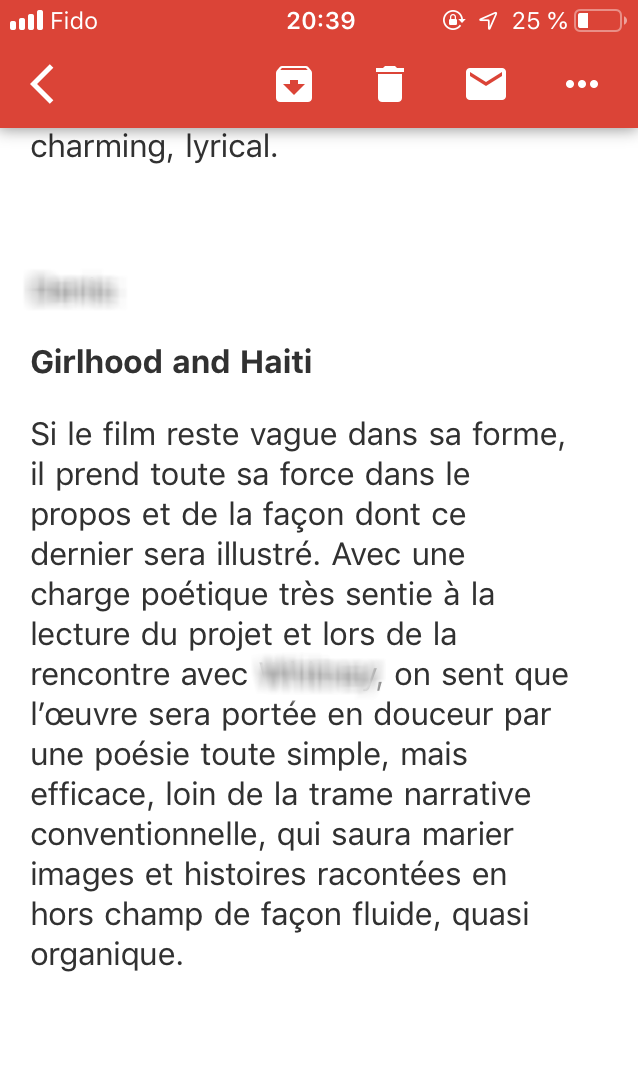
Feedback from the jury
Receiving that criticism was kind of frustrating because a lot of people see me as sweet and calm. But this is not what I’m trying to say in my film right now. They misinterpreted or confused my intention with the energy that I show. The film and my personality are two different things. “Why are you trying to mix them up? Why is it that my being sweet led you to accept the movie and not the content of the movie itself?” In front of them [the jury], I did not seem like a filmmaker. I felt like a sweet young woman in their eyes and I was not taken seriously.
In Image class
This photo is about peer support. I was in the Image class and worked with other students as a team. We had to recreate the lighting from a painting. I chose this because I'm really interested in being a director of photography and learning more about artificial lighting. I was trying to see how I could create an artificially-lit set, with the people who give me so much support.
Peer support
S. and I were doing a sound assignment. We needed two voice actors. It was a very stressful situation because we did not have a lot of time to finish this assignment. So, I messaged M. and F. at the last minute … “Hey, can you come to school right now. I really need voices.” They came. I was so grateful for these kinds of people that just come to be there for me so quickly. I was so grateful for the kind of friends I have. In the recording studio, there are two glass windows. This picture is of our reflection. Through these windows, you see things double. At that moment, we had just finished recording their voices. I took a picture of our reflection. It was a sort of conclusion and celebration.
The commute
This photo signifies my commute, because most of the time I go home by bus. I wanted to focus as far ahead as possible on the destination, my home. It's a very annoying ride for me. It's very repetitive and I'm not good with repetition, so I've been trying to change it by taking another bus, even if it means that I have to walk more or that I have to wait longer or walk via another street to go to my house. The repetition really got to me this year which is why I'm excited to move out of my parents’ house.
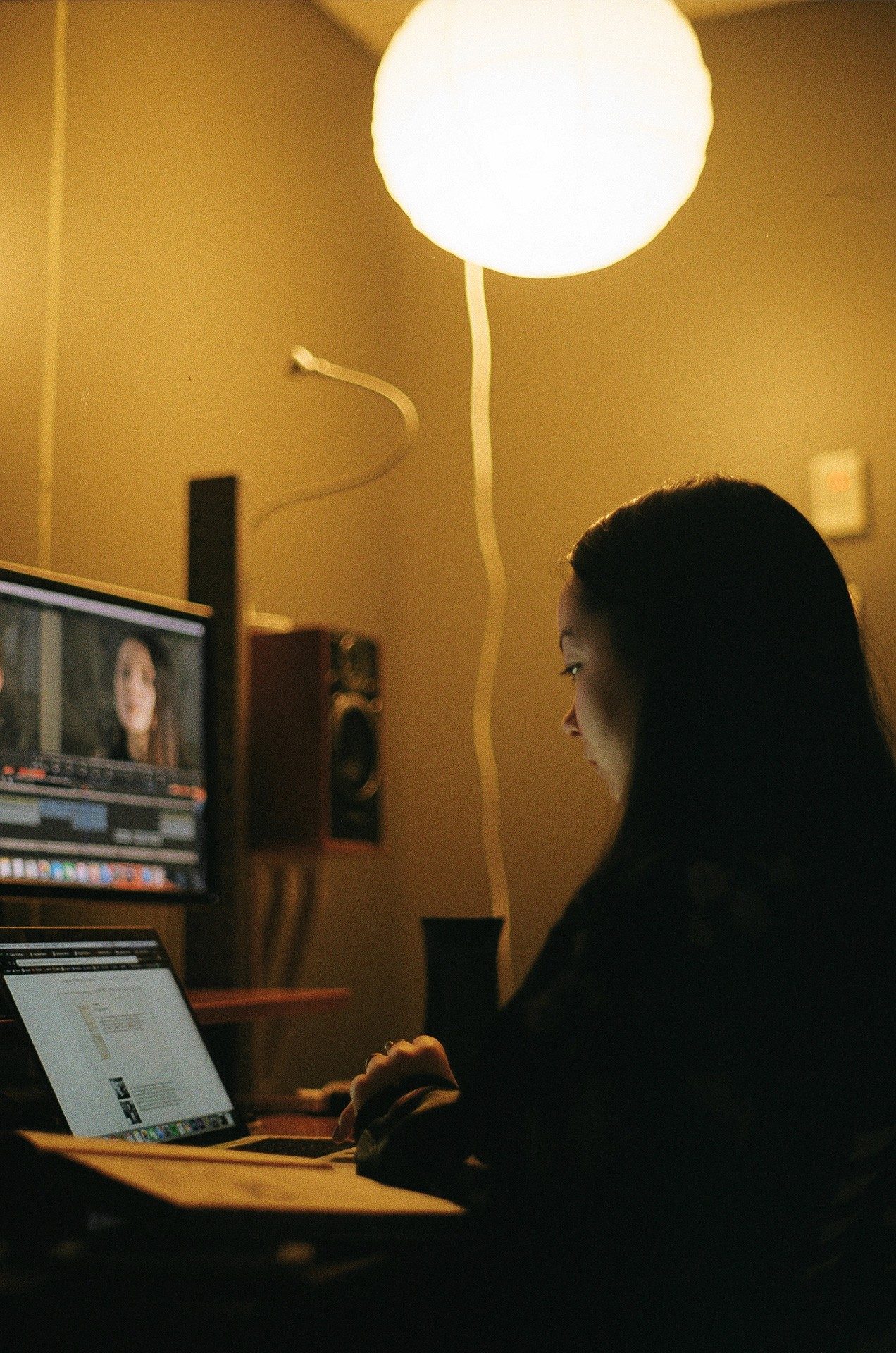
The editing suites
S. and I have been spending a lot of time in the editing suites, which have almost become our home. Making [the suites] comfortable is very important. We use these lanterns on film sets to give a very nice, warm lighting. So we put one on the ceiling of the editing suite. Even if we aren’t both editing, it’s good to have this support. We’re in the same room, I’m studying for something, and she’s editing. Then it’s like, “Okay, now we’re going to be social.” “Okay, now we’re going to work.” That’s also why I’m moving out [of my parents’ place] with S., because I know that this is the kind of relationship in which we can be there for each other, working alongside each other, knowing when to stay quiet and knowing when to distract each other and lighten the mood.
Women on set
For most of my previous semester and for most of my planning before the shoots began, I was with these three women in the photo. We developed this group support. This was the set for N. and I was her PM. I wanted to take behind-the-scenes pictures for her because I wanted her to remember how she directed her film. There are all these obstacles [in filming] but the important element in the picture is the three people who were close to each other.
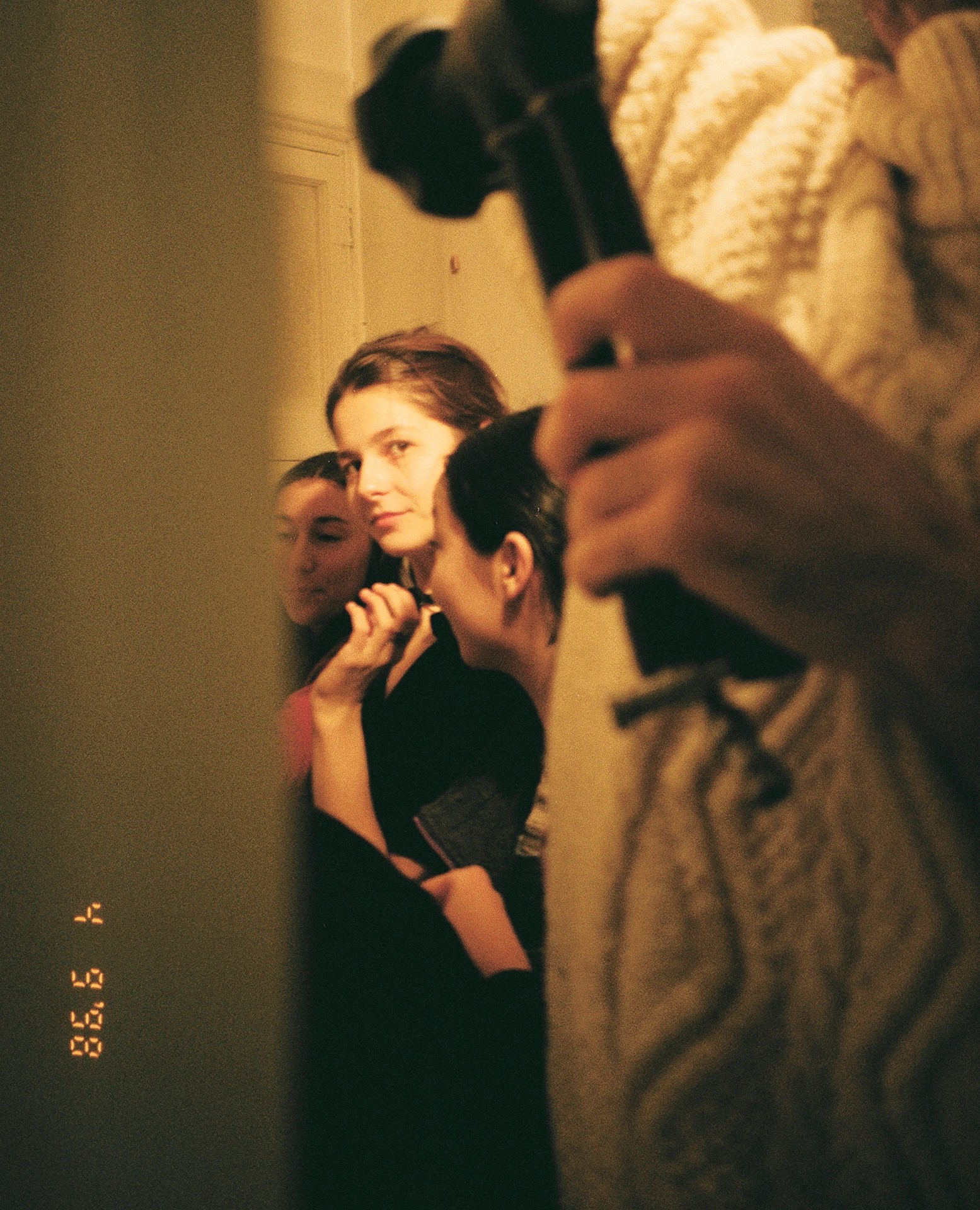
Being DoP for Z.
On this set, I had a lot of pressure because we wanted to keep the crew as small as possible and because the film deals with a sensitive subject. As a result, I did not have anyone to help me create images. I was also thinking about how people were going to judge me now, because when they see Z.’s film, they would ask who the DOP was. I was feeling very lonely, carrying this pressure by myself. In the end, I managed to stay calm and did everything I needed to do. Later, I was complimented on the lighting for the interviews in this film.
On the set of my film 2
My parents’ house became the set for my film. It felt like an invasion of privacy. Because we live on the South Shore, few people have visited my home. We lost a shirt, and then everyone started looking everywhere for it. I felt like they were looking through all of my personal stuff. I told my parents and my brother to leave for the weekend. We fixed everything before they came back. So when my parents returned, they were like: “Oh good, everything is the same.” But this picture shows that we actually turned the place upside down, and the rooms were repurposed for the filming.
On my set
This picture was taken on the set for my own film. We had this image of two bedrooms in our heads and we were trying to find ways to make it work for a really long time. So it was a very satisfactory moment to see what my film finally looked like. One room had a lot of fabric hung. I had a budget of $80-100. Z. went to a store to buy fabric but she was manipulated by the seller and ended up buying $450 worth of fabric. She told him she couldn’t pay him, but he told her he owed her now and wouldn’t let her leave the store until she put down her name and a deposit of $200. Then she was able to leave the store, but had a little panic attack, called her mom and asked for more money. So I still have $450 worth of fabric in my house. I paid for it with my savings. This is something that halved the size of my bank account. I’m glad it looked beautiful, but it was a very stressful situation. Just two days before shooting the film, I was like, “Oh, no, I have $500 less in my budget already.”
My grandmother’s perspective
This is my grandmother. Most of my family is in Canada and the United States. But a lot of my uncles and aunts, and my grandparents still live in Haiti. I see them every few years. It had been maybe five years since I had seen my grandmother. She's 76. She has never been to a theatre. She falls asleep when she watches a movie. She understands documentaries more as journalism than as art or as film. For her, what I do in film school doesn’t have much significance. But she was still willing to participate in my documentary. I wish I was more passionate about something that was more directly useful to society. For example, I could have been a doctor; instead, I chose an artistic field. It is just harder to see [the impact of art on people]. I’m glad I have this confidence now and I like to have conversations [about my career with my grandma]. It also made me question my privilege of living [in Canada] and having that career option. In Haiti, film is not a field that you study. All the people of my age I met there were studying engineering, business or medicine. Going back to Haiti for me was essential to my understanding of myself and the kind of film that is important for me to make. There is a big Haitian community in Canada, in Montreal specifically. But not a lot of people know Haiti. In cinema, Haitians are often given secondary roles or made into heroes, people who live in a developing country and still do stuff in spite of all the difficulties. But I want to tell everyday, even banal, stories [of Haitians] and how they exist in this environment.
My trip to Haiti
Last winter, my grandfather passed away. So I spent three weeks in Haiti. Part of that was to attend the funeral, but I also wanted to gather materials for my film. I took photos, did some interviews, and recorded the ambience. All those elements will become part of my documentary. It was a break, going back to simpler things. But it wasn't a break at the same time. My aunt is the principal of a school, and they were doing a dance show. Since I have some experience in theatre, they asked me: "Can you help us out with the mise-en-scene?” I helped out a bit for the dance show. The day after I had finished all my interviews and I was done with the dance show, I took this photo. “This is really me. This is me in Port-au-Prince.”


